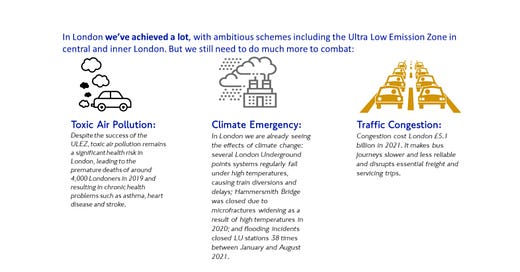Climate Emergency is not forecast — it’s London’s reality
What connects the Emergency and the Bridge - story 49
Between August 5 and 13, 2020, the UK saw its longest stretch of hot weather since the 1960s. Temperatures were above 34°C everyday.
Thursday 13 August, Hammersmith Bridge was closed to all traffic. Shortly after London Borough of Hammersmith & Fulham published a guide for residents called, What is the climate and ecological emergency? This explained,
During the heatwave in 2020, Hammersmith Bridge was closed to all traffic after the bridge fractures were aggravated by extreme heat.
H&F Council were the first public body to connect directly the climate emergency and the closure of Hammersmith Bridge. Their message was stark in its simplicity
We can expect heatwaves like that of August 2020 every other year by mid-century.
While bridge closures are not new with aging infrastructure, what made this moment significant was the framing. Rather than treating the incident as a standalone technical failure, H&F Council situated it within the larger context of climate breakdown—arguing that global warming was compounding existing vulnerabilities.
Climate and Transport Strategy
Two years later, in November 2022, the Mayor revised his Transport Strategy. An accompanying graphic underscored the “triple challenges” now facing the capital: toxic air pollution, climate change, and traffic congestion.
This repeats the H&F Council message,
Hammersmith Bridge was closed due to micro fractures widening as a result of the high temperatures in 2020.
Right here, right now
The climate emergency is not happening over there. It is here.
It is not going to happen in the future. It is happening now.
We need to accept that and plan accordingly.



